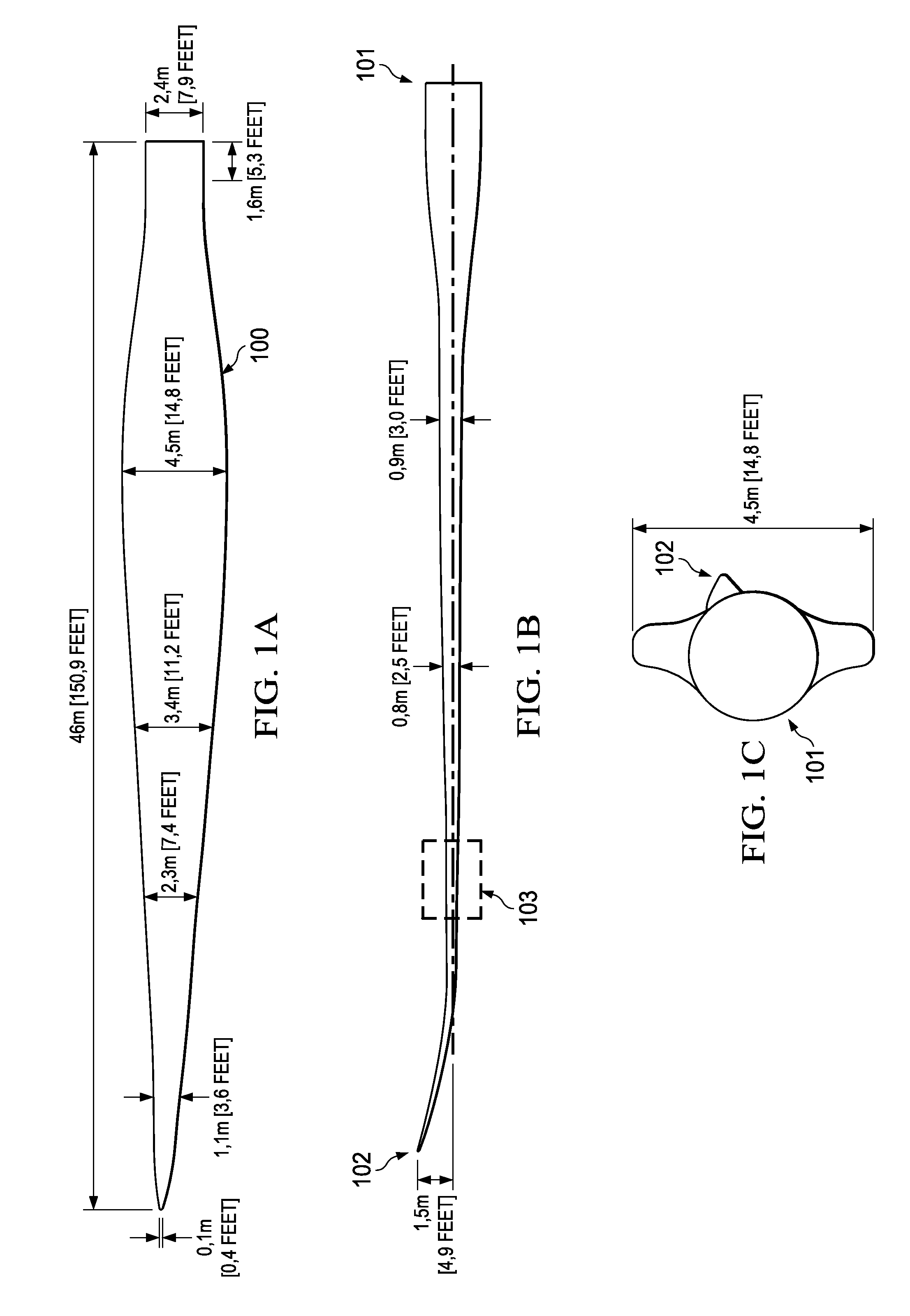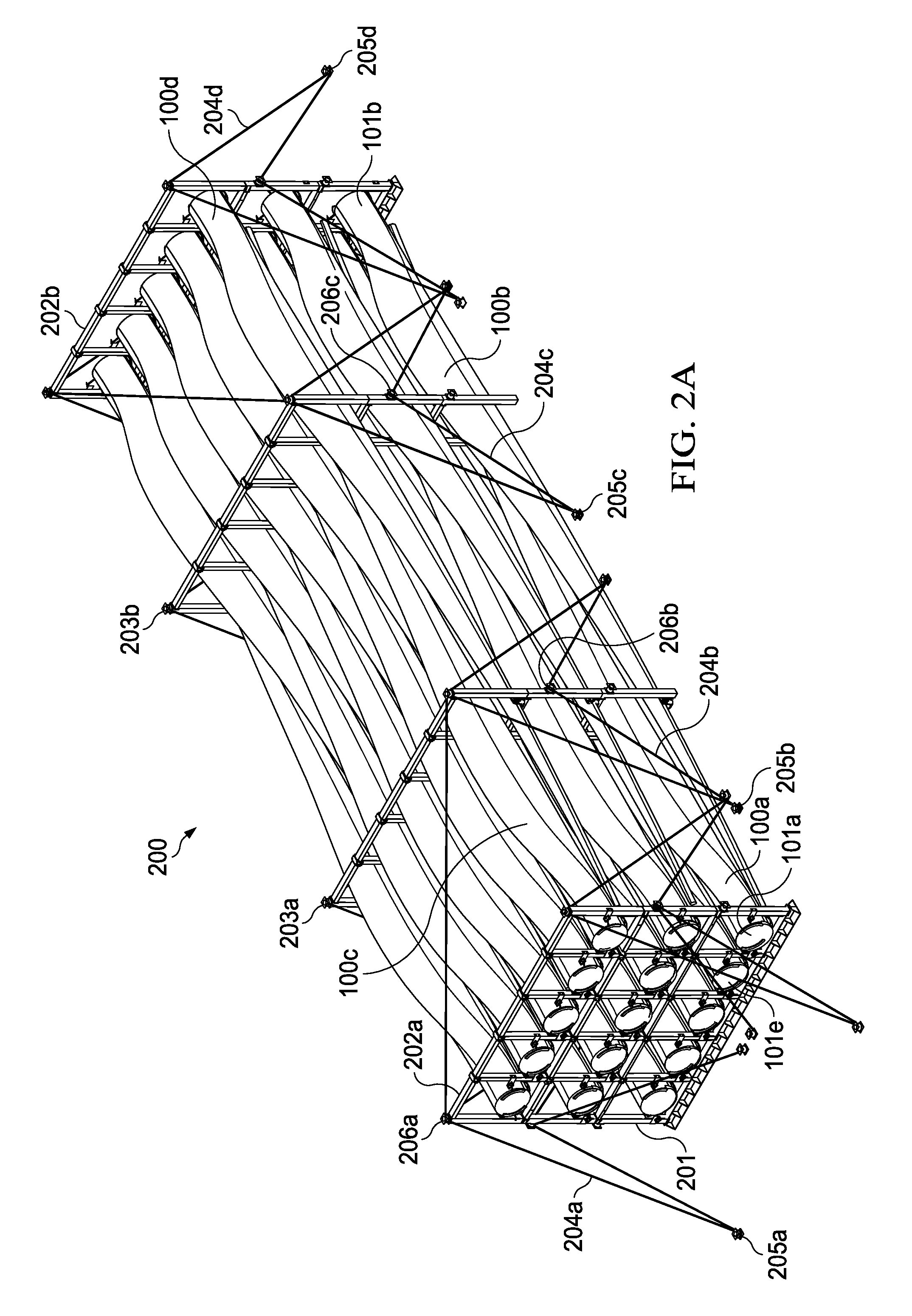Methods for Transporting Wind Turbine Blades
a technology wind turbine blades, which is applied in the field of wind turbine blades, can solve the problems of significant, and often avoidable, monetary loss to the wind turbine blade manufacturer, undue stress, and contact between vertically adjacent blades, so as to reduce unnecessary costs and minimize the effect of the force typically incurred during ocean transpor
- Summary
- Abstract
- Description
- Claims
- Application Information
AI Technical Summary
Benefits of technology
Problems solved by technology
Method used
Image
Examples
Embodiment Construction
[0027]The principles of the present invention and their advantages are best understood by referring to the illustrated embodiment depicted in FIGS. 1-4 of the drawings, in which like numbers designate like parts.
[0028]FIGS. 1A-1C are conceptual diagrams of a generic wind turbine blade 100 suitable for describing the principles of the present invention. Currently there are a number of wind turbine blade constructions used worldwide, although a typical wind turbine blade 100 will include a root with a cylindrical section 101 and skin panels or shells supported by the root, which extend to a blade tip 102 and provide the surfaces of the blade airfoil. Longitudinally extending bolts, discussed below, attach cylindrical section 101 to the rotor hub of the associated wind turbine. Each manufacture typically provides a reinforced blade tip section 103 for allowing wind turbine blade 100 to be secured, transported, and supported without damage to the outer shell or root.
[0029]Representative...
PUM
 Login to View More
Login to View More Abstract
Description
Claims
Application Information
 Login to View More
Login to View More - R&D
- Intellectual Property
- Life Sciences
- Materials
- Tech Scout
- Unparalleled Data Quality
- Higher Quality Content
- 60% Fewer Hallucinations
Browse by: Latest US Patents, China's latest patents, Technical Efficacy Thesaurus, Application Domain, Technology Topic, Popular Technical Reports.
© 2025 PatSnap. All rights reserved.Legal|Privacy policy|Modern Slavery Act Transparency Statement|Sitemap|About US| Contact US: help@patsnap.com



